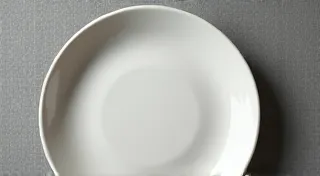The Roux's Foundation: Building Strength and Stability in Writing
There’s a quiet dignity to old things, a depth of story etched into their surfaces. I’m not just talking about ancient buildings or weathered furniture; I mean the objects imbued with a tangible history, things that have witnessed lives lived and moments passed. For me, those objects often take the form of antique accordions. The scent of aged wood and leather, the gleam of brass keys worn smooth by countless fingers - it’s a sensory experience that unlocks a profound sense of connection to the past. And it’s that same appreciation for foundational strength, the backbone that supports everything else, that I find mirrored in the culinary world, specifically with a roux.
A roux, for those unfamiliar, is simply a mixture of flour and fat, traditionally butter, cooked together. It's the basis for so many classic sauces – béchamel, velouté, espagnole, hollandaise. Without it, you don’t have those rich, luxurious flavors that define so much of French cuisine. It seems so simple, almost trivial. But understanding how to make a *good* roux, a truly reliable one, is a lesson in patience, technique, and respect for the process. And it’s a surprisingly apt metaphor for building a strong foundation in writing.
My grandfather, a quiet man of few words but immense skill, built furniture. He believed that a piece wasn't truly beautiful, or truly *good*, until the underlying structure was flawlessly solid. He’s the one who first instilled in me the value of a strong foundation. I remember watching him painstakingly join pieces of wood, ensuring each dovetail was perfectly aligned, each mortise precisely cut. Rushing, he’s always said, was a sure path to failure. That same principle applies directly to writing. We can spin beautiful prose, weave intricate narratives, but if the core elements – grammar, sentence structure, clarity of thought – are weak, the whole edifice will eventually crumble.

The Initial Heat: Establishing Basic Grammar & Structure
Making a roux begins with heat. The fat melts, the flour disperses, and the mixture slowly transforms. Similarly, a writer's journey starts with the fundamentals: grammar, punctuation, sentence construction. These aren’t glamorous aspects of writing; they’re the necessary, sometimes tedious, groundwork. Ignoring them is like trying to build a house on sand. You might get something that *looks* like a house for a while, but it won't stand the test of time or withstand any serious scrutiny.
Many aspiring writers skip this stage, eager to dive into storytelling. They think, “Grammar is boring; I just want to tell a good story!” But a story, however compelling, is diminished by constant grammatical errors or convoluted sentences. Think of it like an accordion with missing reeds – the music is incomplete, the richness is gone.
The Color Transformation: Refining Your Voice and Style
As a roux cooks, it changes color. A “white roux” is used for béchamel, cooked briefly and retaining a pale color. A “brown roux” – cooked longer – is the foundation for a richer, darker velouté, and imparts a nutty, caramel-like flavor. This color transformation represents the refinement of a writer’s voice and style. It’s the period of experimentation, of pushing boundaries, of finding what makes your writing unique.
This is where the personality of your writing emerges. Are you aiming for a crisp, journalistic style? Or a lyrical, evocative tone? Are you embracing humor, or opting for a more serious approach? It’s a process of trial and error, of constant revision and self-reflection. Like a chef adjusting the cooking time to achieve the perfect shade of brown, a writer must continuously hone their craft.
I remember struggling with my own voice early on. I’m drawn to the melancholic beauty of old things, the quiet dignity of weathered objects. Trying to capture that feeling in words felt like wrestling with an invisible force. It took years of practice, of reading widely, of getting feedback (and enduring rejections), before I began to feel comfortable expressing myself.
The Consistency Check: Ensuring Clarity and Coherence
A good roux isn’t just about color; it’s about consistency. It should be smooth, emulsified, free of lumps. This mirrors the importance of clarity and coherence in writing. A piece, no matter how beautifully written, is useless if the reader can’t understand it. Sentences need to flow logically; paragraphs need to connect seamlessly; the overall argument needs to be clear and well-supported.
Think about reading a piece of writing where the sentences are disjointed, the paragraphs are disconnected, and the central idea is muddled. It’s frustrating, disorienting, and ultimately unsatisfying. Just as a chef would meticulously scrape the bottom of the pan to ensure a perfectly smooth sauce, a writer must carefully review their work to eliminate any ambiguity or confusion.

Beyond the Basics: Mastering the Art of Emotion & Storytelling
Once you’ve mastered the fundamentals – the “white roux” of grammar and structure – you can begin to explore the more nuanced aspects of writing. This is where the “brown roux” of storytelling, of emotion, of creating a truly immersive experience for the reader comes into play.
Consider an old accordion. It’s more than just a collection of wood, metal, and leather. It’s a vessel for music, a conduit for emotion, a tangible link to the past. The craftsmanship involved in its construction is astounding; each reed meticulously tuned, each bellows carefully crafted. This dedication to detail is what elevates it from a mere object to a work of art.
Similarly, good writing isn’t just about stringing words together; it’s about evoking emotion, creating atmosphere, transporting the reader to another time and place. It’s about finding the perfect words to convey a complex idea, a subtle feeling, a profound truth. This requires more than just technical skill; it requires sensitivity, intuition, and a deep understanding of the human condition.

The Finished Product: A Legacy of Strength & Resilience
A perfectly made roux is the foundation for countless delicious sauces, each with its own unique flavor and character. A solid writing foundation allows you to explore a vast range of writing styles, genres, and subjects. It allows you to take risks, to experiment, to push the boundaries of your craft. It is the bedrock upon which a literary legacy is built.
My grandfather’s furniture still stands, a testament to his dedication to craftsmanship. And I hope that, through my writing, I can create something equally enduring – a legacy of words that connect with readers, that inspire them, that leave a lasting impression. Because ultimately, like a well-made roux, a strong writing foundation is what sustains us, what allows us to create something truly meaningful and lasting.





